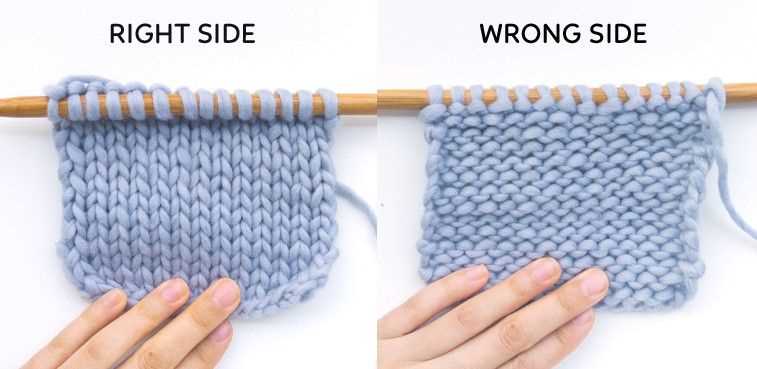
The stockinette stitch is one of the most popular and versatile knitting patterns. It is a simple stitch that creates a smooth and uniform fabric with a beautiful texture. The pattern is characterized by alternating rows of knit and purl stitches, creating a distinct “V” shape on one side of the fabric and a smooth, flat surface on the other.
This stitch is commonly used in a variety of knitting projects, from scarves and sweaters to blankets and hats. Its simplicity makes it a great stitch for beginners, while its versatility allows more experienced knitters to experiment with different patterns and designs.
One of the reasons why the stockinette stitch is so popular is its versatility. It can be worked with any type of yarn, from bulky to laceweight, and can be used to create a wide range of fabrics, from light and airy to thick and cozy. The stitch also has a natural elasticity, making it great for projects that require stretch, such as socks and gloves.
What is Stockinette Stitch?
The stockinette stitch is one of the most basic and popular knitting patterns. It is characterized by smooth, V-shaped stitches on the right side of the fabric and a bumpy, purl stitch on the wrong side. The stockinette stitch is versatile and can be used to create a variety of garments and accessories.
To knit the stockinette stitch, simply alternate between knitting one row and purling the next. This creates a fabric with a smooth, even texture that is ideal for showcasing yarn colors and creating a polished look. The stockinette stitch can be used for everything from simple scarves and blankets to more complex sweaters and socks.
One of the advantages of the stockinette stitch is its ability to create a fabric that doesn’t curl at the edges, making it an excellent choice for projects where you want a clean, finished look. However, this also means that edges may roll up if not properly finished or if the tension is too loose.
When working with the stockinette stitch, it’s important to pay attention to tension and gauge. Uneven tension can result in a fabric that appears bumpy or stretched in certain areas. It’s also worth noting that stockinette stitch fabrics tend to have a tendency to curl, so using a blocking method or incorporating ribbing or garter stitch borders can help prevent this.
In conclusion, the stockinette stitch is a fundamental knitting pattern that creates a smooth, versatile fabric. It’s a great choice for a variety of projects, from simple scarves to more complex garments. With attention to tension and finishing techniques, you can ensure that your stockinette stitch projects look polished and professional.
Overview of Stockinette Stitch
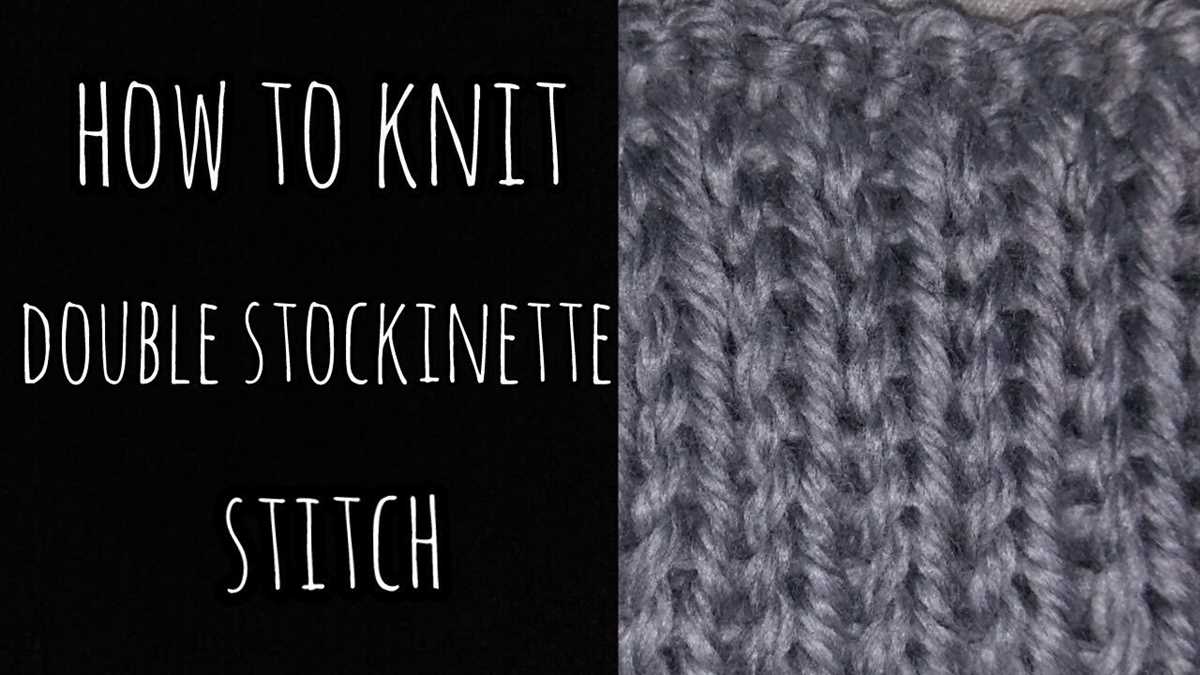
The stockinette stitch is one of the most basic and commonly used knitting patterns. It creates a smooth and flat fabric with one side featuring “V” shaped stitches and the other side showing horizontal rows. This versatile stitch is often used for a variety of knitting projects, including sweaters, scarves, and blankets.
To knit the stockinette stitch, you simply alternate between knitting and purling rows. The pattern is worked by knitting one row and purling the next, creating a subtle texture that is both visually appealing and easy to achieve. The stockinette stitch is often used as a background stitch, allowing other stitch patterns or designs to stand out.
Benefits of the stockinette stitch:
- Creates a smooth and flat fabric
- Provides good drape and elasticity
- Easy to knit and purl, making it suitable for beginners
- Allows other stitch patterns or designs to stand out
One important thing to note when working with stockinette stitch is that it has a tendency to curl at the edges. To prevent this curling, it is common to add border stitches, such as garter stitch or seed stitch, to the edges of the fabric. Additionally, blocking the finished project can help relax the fabric and minimize curling.
Overall, the stockinette stitch is a versatile and widely used knitting pattern that is suitable for a variety of projects. Whether you’re a beginner or an experienced knitter, mastering the stockinette stitch will provide you with a foundation for creating beautiful and polished knitted pieces.
How to Knit Stockinette Stitch
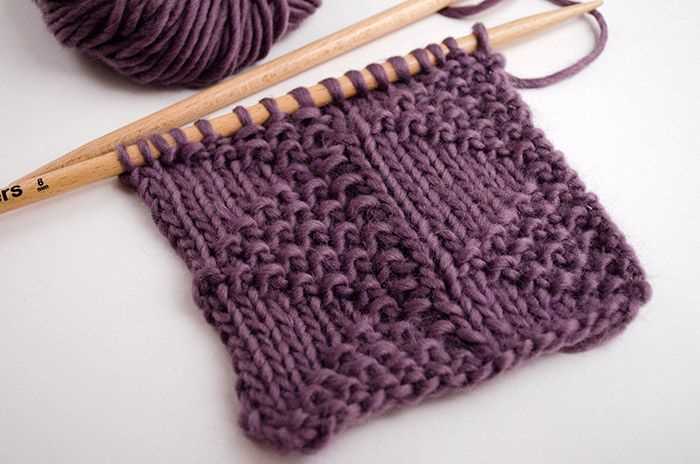
To knit the stockinette stitch, you will need a pair of knitting needles and yarn of your choice. The stockinette stitch is one of the most basic and commonly used stitches in knitting. It creates a smooth, even fabric with a distinctive “V” pattern on the right side.
To begin, cast on an even number of stitches. The stockinette stitch is worked over an even number of stitches to maintain the pattern. Once you have cast on the desired number of stitches, hold the knitting needles with the cast-on stitches in your left hand.
Next, insert the right knitting needle into the first stitch on the left needle. Make sure the yarn is at the back of your work. Take the working yarn with your right hand and wrap it around the right needle from back to front. This is called a knit stitch. Use the right needle to pull the loop of yarn through the first stitch, slipping the original stitch off the left needle. Repeat this process for each stitch across the row.
After completing the first row, turn your work and repeat the process for each row. The knit stitch is used for each row, resulting in a smooth surface on the right side of the fabric. On the wrong side, the purl stitch is used to create a bumpy texture.
Continue knitting in stockinette stitch until you have reached your desired length. Once you are finished, bind off the stitches to secure the edges of your project. The stockinette stitch can be used to create a variety of different items, such as scarves, sweaters, and blankets.
Stockinette Stitch vs. Garter Stitch
The stockinette stitch and the garter stitch are two basic knitting stitches that every knitter should know. While they may seem similar, they have distinct characteristics and produce different textures in knitted fabric.
Stockinette Stitch:
The stockinette stitch is one of the most common and versatile stitch patterns. It is created by knitting on the right side and purling on the wrong side of the fabric. This stitch creates a smooth and flat fabric with a distinct “V” shape on the right side and horizontal ridges on the wrong side.
In the stockinette stitch, the knitted fabric has a tendency to curl at the edges. This is due to the natural bias of the fabric, which causes it to pull inwards. To prevent curling, knitters often use techniques such as adding a border or blocking the finished piece.
Garter Stitch:
The garter stitch is another basic stitch pattern that is created by knitting every stitch on every row. This stitch pattern creates a fabric with a bumpy texture and is often used for scarves, blankets, and other cozy items. The garter stitch is reversible, meaning it looks the same on both sides.
Unlike the stockinette stitch, the garter stitch does not curl at the edges. This makes it a popular choice for projects that require a flat fabric. Additionally, the garter stitch is great for showcasing variegated or multicolored yarn as it creates a subtle texture that doesn’t overwhelm the color changes.
- In summary, the stockinette stitch creates a smooth and flat fabric with a tendency to curl at the edges, while the garter stitch creates a bumpy and reversible fabric that stays flat. Both stitches have their own unique uses and can be combined to create interesting patterns and textures in knitting projects.
Tips for Knitting Stockinette Stitch
Stockinette stitch is one of the basic knitting stitches that creates a smooth and flat fabric. It is commonly used for making garments, scarves, and other knitted projects. Here are some tips to help you knit stockinette stitch effectively:
1. Choose the right yarn and needles:
When knitting stockinette stitch, it’s important to choose the right yarn and needles for your project. A lighter weight yarn will give you a more delicate fabric, while a heavier weight yarn will result in a thicker and warmer fabric. Choose needles that correspond to the yarn weight to ensure the correct gauge.
2. Practice good tension control:
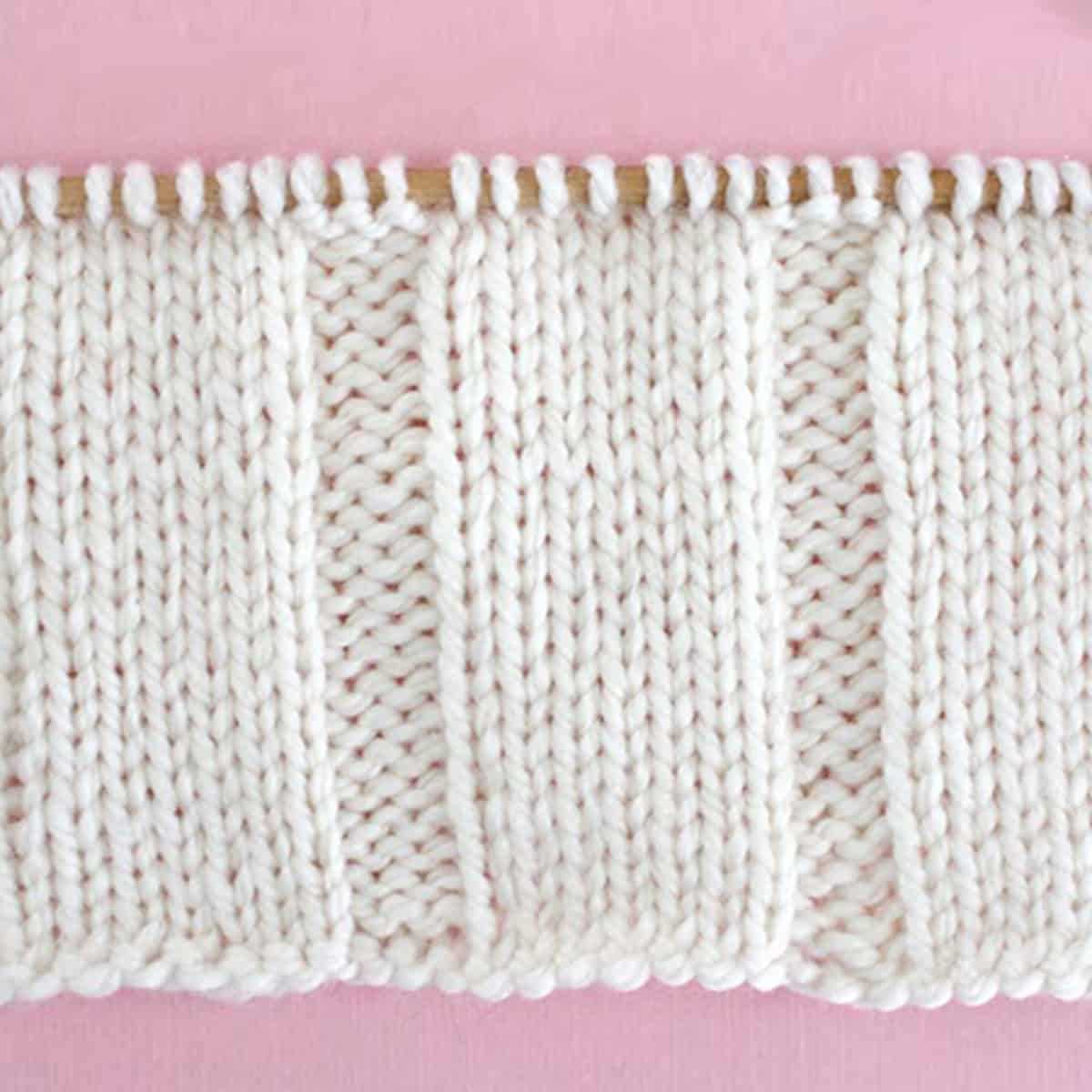
To achieve an even and smooth stockinette stitch fabric, it’s important to practice good tension control. Avoid pulling the yarn too tightly or knitting too loosely, as it can lead to uneven stitches. Find a comfortable tension that allows the stitches to glide easily along the needles.
3. Mind your purl stitches:
In stockinette stitch, you alternate between knitting and purling rows. Pay attention to your purl stitches, as they can easily become tighter or looser than your knit stitches. Make sure to maintain consistent tension throughout the purl rows to achieve a uniform fabric.
4. Use stitch markers:
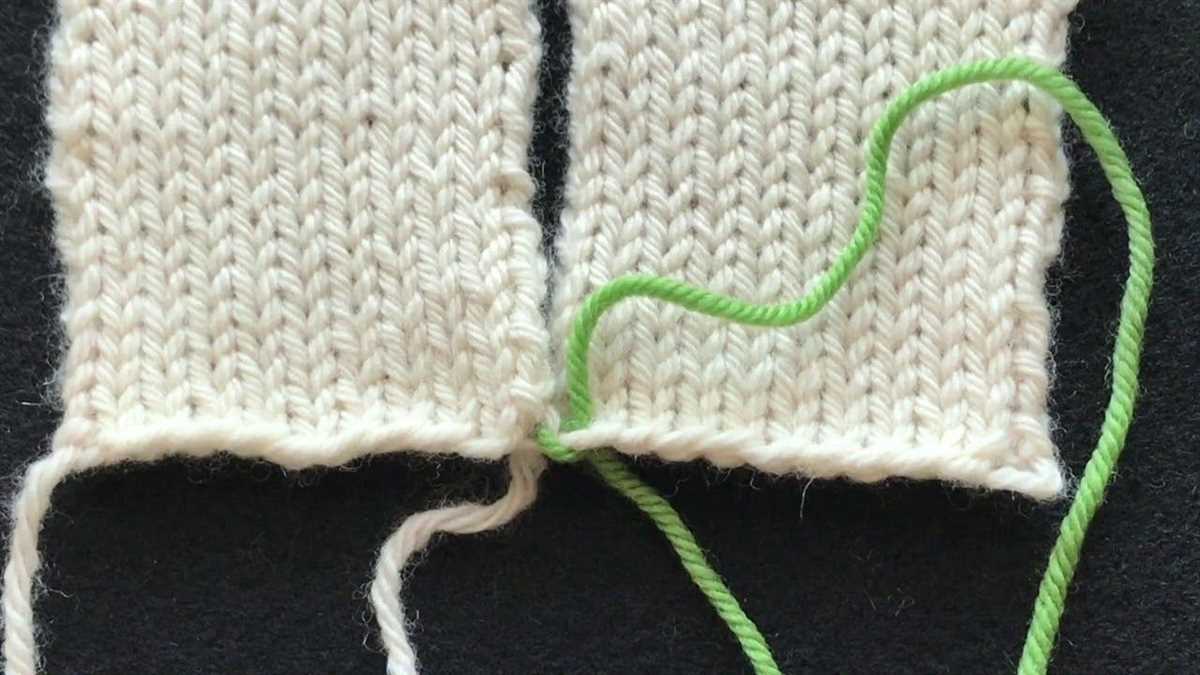
If you’re knitting a large stockinette stitch project, it can be helpful to use stitch markers to keep track of your progress. Place stitch markers at regular intervals to mark specific sections or pattern repeats. This will help you stay organized and prevent mistakes.
5. Block your finished project:
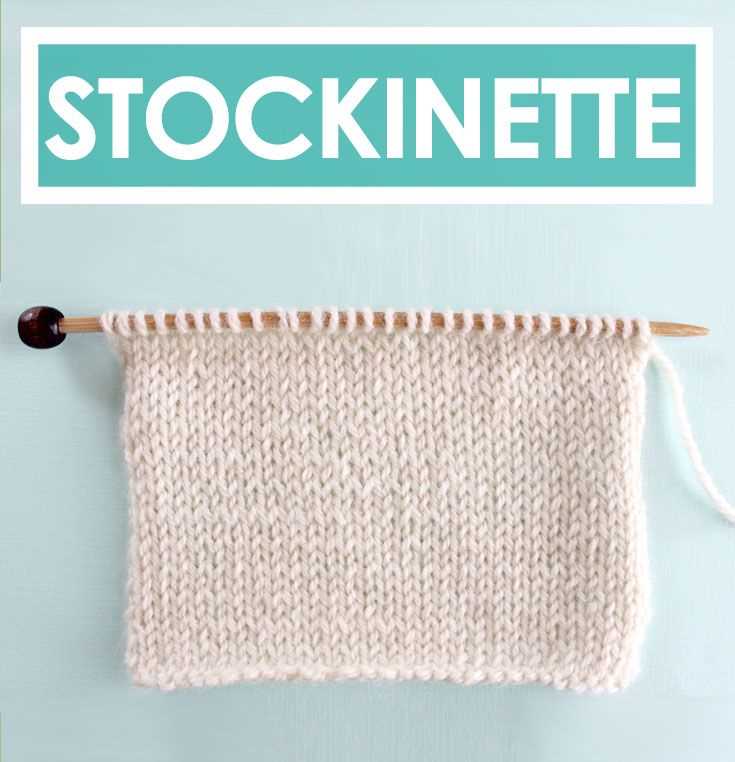
After you’ve completed your stockinette stitch project, it’s important to block it to give it a professional finish. Blocking helps even out the stitches, relaxes the fabric, and gives it a polished look. Follow the blocking instructions for your specific yarn to achieve the best results.
By following these tips, you’ll be able to knit stockinette stitch with ease and create beautiful and smooth fabrics for your knitting projects.
Choosing the Right Yarn for Stockinette Stitch

When it comes to knitting a stockinette stitch pattern, choosing the right yarn is crucial to achieve the desired results. The stockinette stitch is a basic knitting stitch that creates a smooth and uniform fabric with V-shaped stitches on one side and horizontal lines on the other. To enhance the visual appeal and drape of the finished project, it is important to select a yarn that complements the stitch pattern.
Yarn weight and fiber content: The weight of the yarn, which refers to its thickness, plays a significant role in determining the appearance and feel of the stockinette stitch. For a crisp and defined look, opt for a lighter weight yarn such as fingering or sport weight. These thinner yarns will create smaller stitches, resulting in a neater and more polished finish. On the other hand, if you prefer a more relaxed and cozy fabric, choose a heavier yarn like bulky or chunky weight. The larger stitches will give the garment a softer and more textured appearance.
Another important factor to consider is the fiber content of the yarn. The stockinette stitch drapes differently with different fibers. Natural fibers such as wool, alpaca, and silk tend to provide excellent stitch definition and drape. They produce a smooth and even fabric that showcases the stitch pattern beautifully. Alternatively, synthetic fibers like acrylic or nylon can be a great choice for beginners or those on a budget. These fibers often have superior color retention and durability.
In conclusion, when choosing yarn for a stockinette stitch pattern, consider the weight and fiber content of the yarn to achieve the desired look and feel. Experimenting with different yarns can be a fun way to explore the versatility of the stockinette stitch and create unique and beautiful knitted projects.
Using the Right Needles for Stockinette Stitch
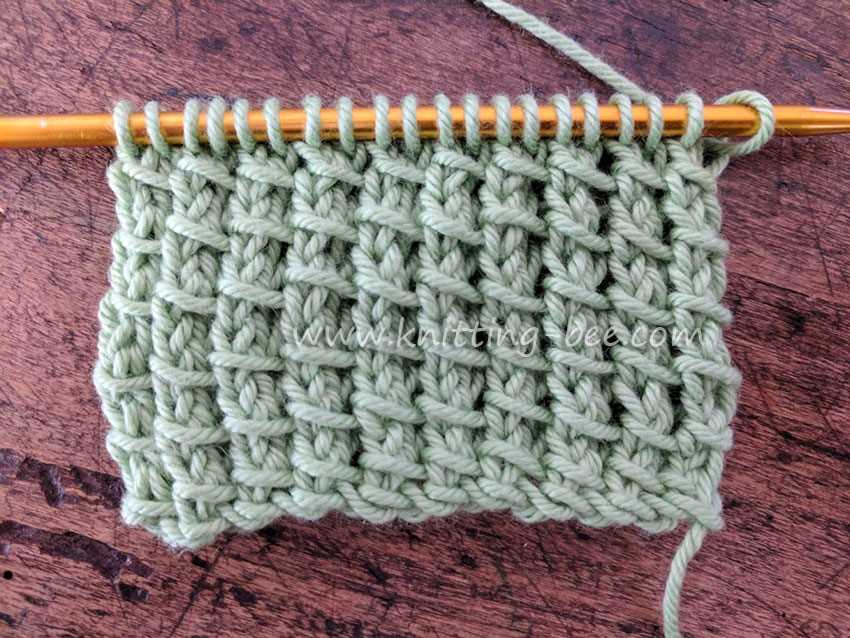
The stockinette stitch is one of the most basic and versatile knitting patterns, creating a smooth and uniform fabric. To achieve the best results with this stitch, it is crucial to use the right kind of needles. The choice of needles can greatly impact the tension, drape, and overall appearance of your knitted fabric.
When knitting stockinette stitch, it is recommended to use needles with a smooth and polished surface. This allows the yarn to glide easily across the needles, resulting in a more even and consistent stitch. Needles made from materials such as bamboo or wood can sometimes cause the yarn to snag or catch, leading to uneven stitches and frustration. Metal or plastic needles are often preferred for stockinette stitch due to their smooth finish.
Another important factor to consider when choosing needles for stockinette stitch is the size. The size of the needles will determine the gauge or tension of your fabric. If you want a tight and dense fabric, choose smaller needles. Alternatively, if you prefer a more open and drapey fabric, opt for larger needles. It is essential to match the needle size to the recommended gauge in your knitting pattern to ensure the desired outcome.
In addition to the material and size, the type of needles can also affect your experience with stockinette stitch. Straight needles are the most common choice, especially for beginners, as they are easy to handle and manipulate. Circular needles, on the other hand, are great for larger projects or when knitting in the round, as they can accommodate a large number of stitches. Double-pointed needles may be used for small projects or when working in a tight circumference, such as knitting socks or hats.
In conclusion, choosing the right needles for stockinette stitch can make a significant difference in the final outcome of your knitting project. Opt for smooth and polished needles made from metal or plastic for an even and consistent stitch. Consider the size of the needles to achieve the desired tension and drape. And finally, select the appropriate type of needles based on the project’s size and construction. With the right needles, you’ll be able to create beautiful and professional-looking stockinette stitch fabric.
Avoiding Common Mistakes in Stockinette Stitch
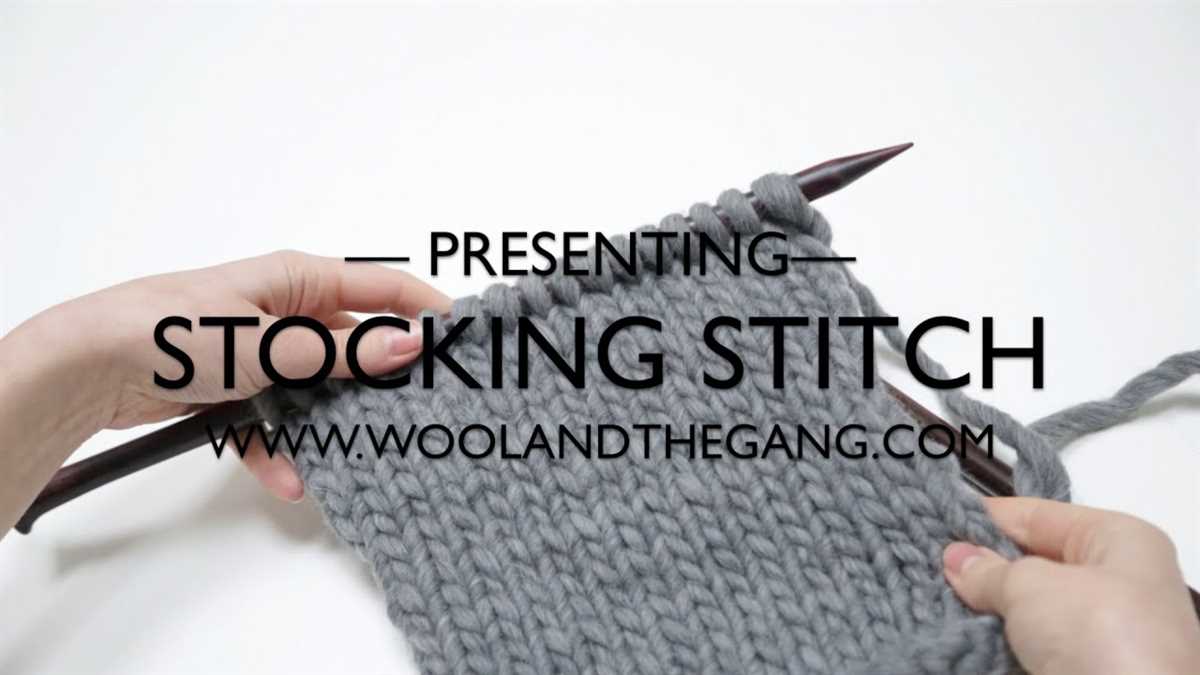
Stockinette stitch is one of the most popular knitting patterns, known for its smooth and even surface. However, even experienced knitters can make mistakes that can affect the overall appearance and quality of the final project. By being aware of these common mistakes and practicing good techniques, you can achieve flawless stockinette stitch results.
1. Uneven tension:
One of the most common mistakes in stockinette stitch is inconsistent tension, where some rows are looser or tighter than others. This can result in a wavy or uneven fabric. To avoid this, make sure to maintain a consistent tension throughout your knitting. You can achieve this by focusing on how tightly you hold the working yarn and adjusting your grip if necessary. Practice knitting with a relaxed hand and avoid pulling too tightly, as this can result in tight stitches.
2. Incorrect stitch counting:
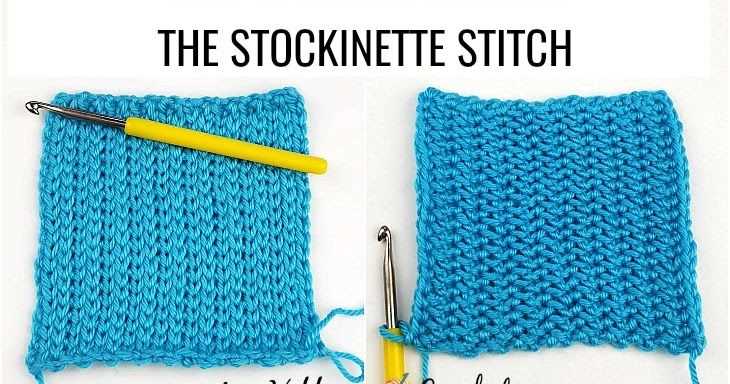
Another mistake to avoid in stockinette stitch is incorrect stitch counting. A simple miscount can throw off the pattern and lead to uneven rows or dropped stitches. To prevent this, make a habit of counting your stitches at the end of each row or round. Double-check that you have the correct number of stitches before proceeding to the next row. This will help maintain an even stitch count and ensure the pattern remains consistent.
3. Forgetting to switch needle sizes:
When knitting stockinette stitch, it’s important to remember to switch needle sizes after completing the ribbing or any other stitch pattern. Stockinette stitch tends to be looser than other stitch patterns, so using a smaller needle size for the main body of your project can help create a more even and cohesive fabric. Follow the pattern instructions and switch to the recommended needle size for stockinette stitch to achieve the desired gauge and finished look.
4. Ignoring gauge swatching:
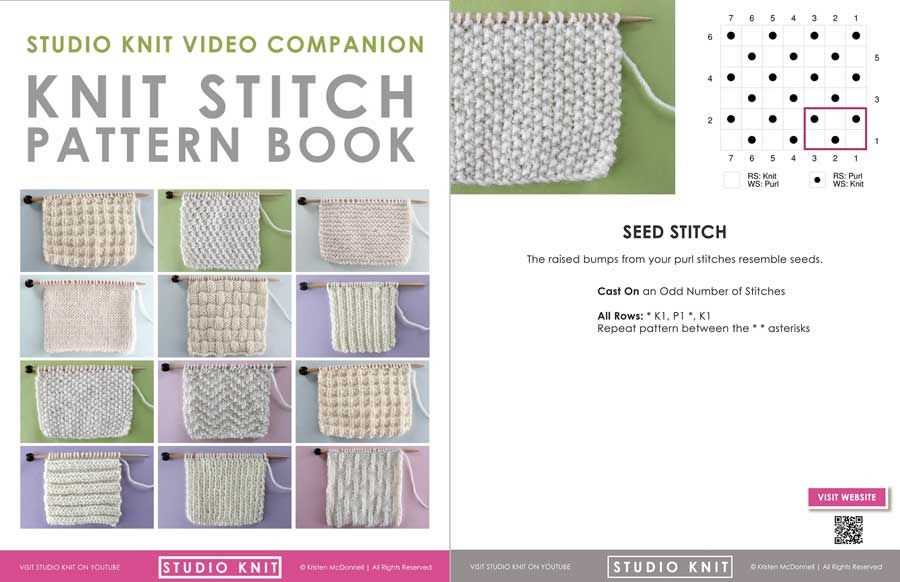
Gauge swatching is essential in any knitting project, and stockinette stitch is no exception. Neglecting to swatch can lead to a project that is too small or too large, as the gauge determines the size and fit of the final piece. Always take the time to knit a gauge swatch before starting your project, following the instructions provided in the pattern. This will help you determine if you need to adjust your needle size or knitting tension to achieve the correct gauge and ensure the best results.
To achieve smooth and flawless stockinette stitch, pay attention to your tension, double-check your stitch count, switch needle sizes as needed, and always swatch for gauge. By practicing these techniques, you’ll be able to avoid common mistakes and create beautiful, professional-looking knitted pieces.
Patterns Using Stockinette Stitch
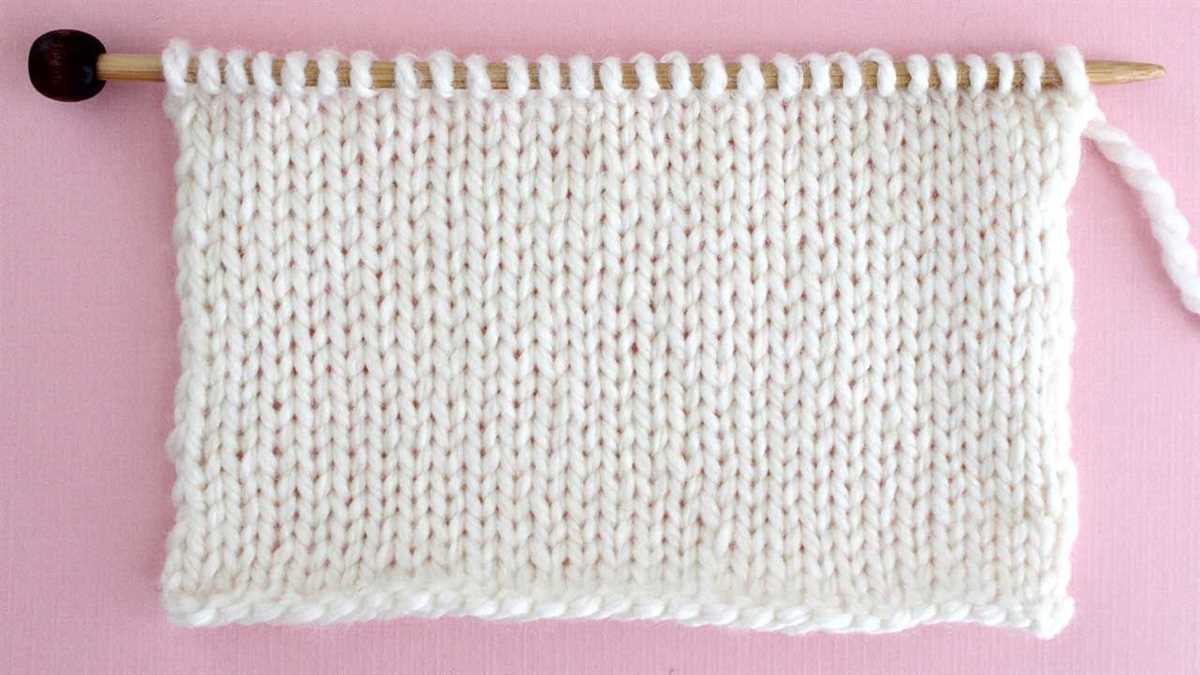
If you’re a knitter, then you’re probably familiar with the stockinette stitch. It’s a simple and classic knitting pattern that creates a smooth fabric with “V” or “slashes” on the right side and purl bumps on the wrong side. This versatile stitch can be used in a variety of patterns to create different textures and designs.
1. Stockinette Stitch Scarf
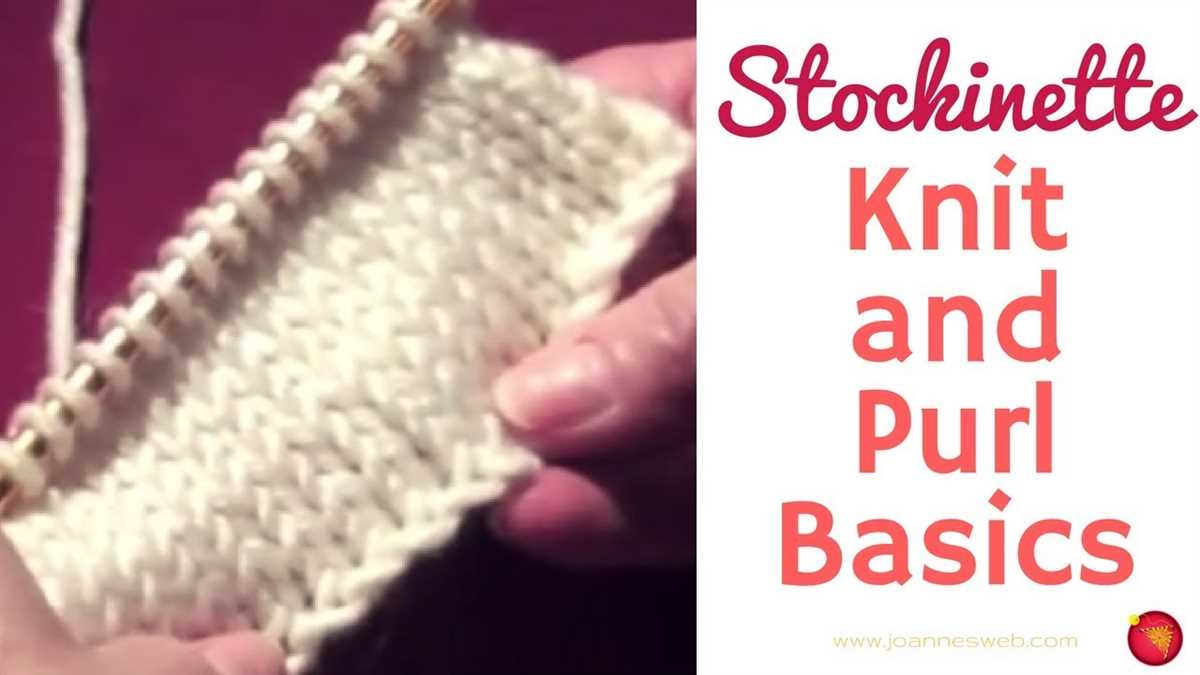
One of the most popular projects for beginners is a stockinette stitch scarf. This pattern is great for practicing your knitting skills and creating a beautiful and cozy accessory. Simply cast on the desired number of stitches, then alternate between knitting and purling each row. The result is a simple, yet elegant scarf that can be worn with any outfit.
2. Stockinette Stitch Sweater
For more intermediate or advanced knitters, a stockinette stitch sweater is a great project to take on. This pattern allows you to create a smooth and polished garment that’s perfect for colder weather. Start by knitting the body and sleeves separately in stockinette stitch, then sew them together and add any desired embellishments or closures. The end result is a cozy and stylish sweater that you’ll love to wear.
3. Stockinette Stitch Baby Blanket
If you’re looking for a project to make for a baby shower or as a gift for a little one, a stockinette stitch baby blanket is a great option. This pattern is simple and easy to follow, and the result is a soft and cuddly blanket that any baby will love. Choose a soft and washable yarn in your desired color, cast on a multiple of stitches, and knit in stockinette stitch until the blanket reaches your desired length. Add a border or embellishments if desired, and you’ll have a beautiful and practical gift.
4. Stockinette Stitch Hat
A stockinette stitch hat is a quick and satisfying project to make. This pattern allows you to create a warm and stylish accessory that’s perfect for colder months. Start by casting on the desired number of stitches and knitting in the round in stockinette stitch until the hat reaches your desired length. Add a ribbed brim or pom pom for extra flair, and you’ll have a trendy hat that’s sure to keep you cozy.
These are just a few examples of patterns that can be created using the stockinette stitch. Whether you’re a beginner or an experienced knitter, this classic stitch is a great choice for a variety of projects. Try experimenting with different yarns, colors, and stitch counts to create unique and personalized items.
Simple Stockinette Stitch Scarf Pattern
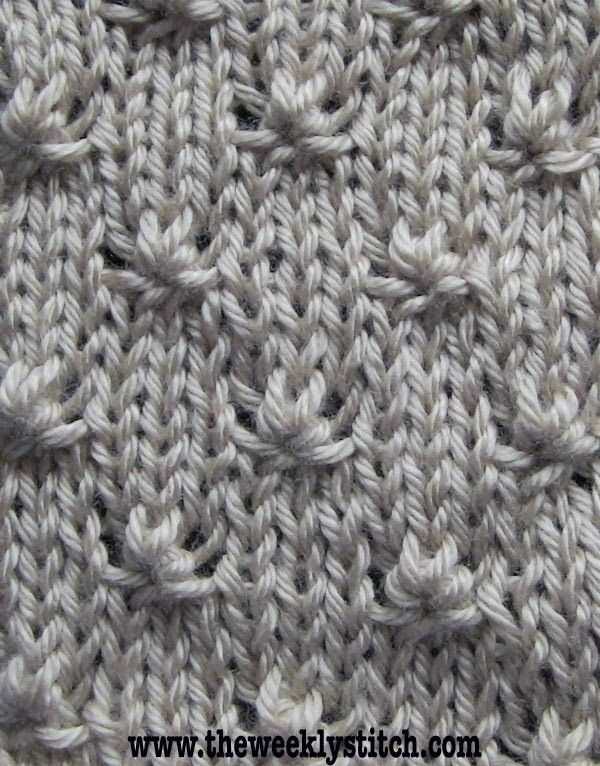
Are you a beginner knitter looking for a simple and easy project to practice your skills? Look no further than this simple stockinette stitch scarf pattern! The stockinette stitch is one of the most basic and versatile knitting stitches, making it perfect for beginners.
To begin, you will need a pair of knitting needles and a ball of yarn in your desired color. Choose a medium weight yarn for a scarf that is warm and cozy without being too bulky.
Instructions:
- Cast on 30 stitches. This will give you a good width for a scarf.
- Knit every row until the scarf reaches your desired length. You can make it as long as you like, but a standard scarf length is around 60-70 inches.
- When you reach the desired length, bind off all stitches.
Tips:
- Make sure to keep your tension even throughout the project to avoid any uneven rows.
- If you want to add some variety to your scarf, you can knit a few rows in a different stitch pattern, such as ribbing, before continuing in stockinette stitch.
- Once your scarf is finished, you can add fringe to the ends by cutting several strands of yarn and attaching them to the cast on and bind off edges. This adds a decorative touch and helps prevent the ends from curling.
With this simple stockinette stitch scarf pattern, you’ll have a cozy and stylish accessory to keep you warm all winter long. Happy knitting!
Stockinette Stitch Baby Blanket Pattern
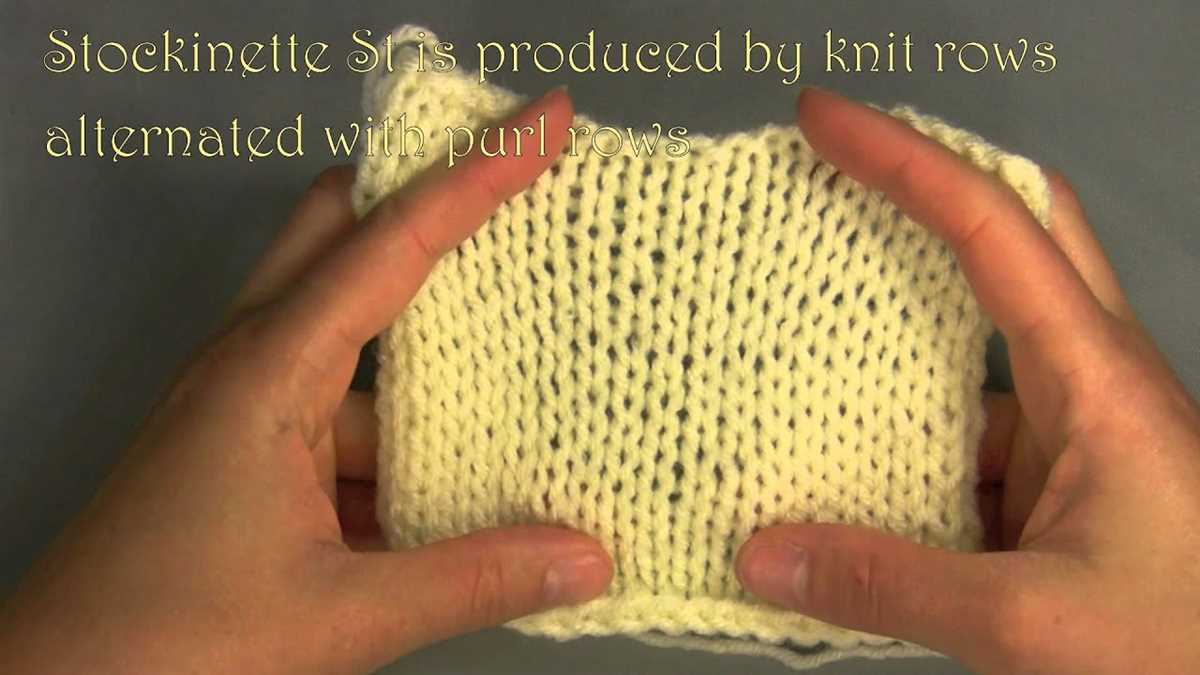
The stockinette stitch is a classic knitting pattern that creates a smooth and flat surface on one side, and a textured, bumpy surface on the other. It is a popular choice for baby blankets, as the smooth side is soft and comfortable for a baby’s delicate skin. This pattern is perfect for beginner knitters who want to practice their knitting skills and create a beautiful and functional blanket for a little one.
To start the stockinette stitch baby blanket, you will need a pair of knitting needles and your choice of yarn. Choose a soft and durable yarn that is suitable for a baby’s sensitive skin. You will also need a tapestry needle to weave in the ends of your work.
Materials:
- Size 8 knitting needles
- Approximately 800 yards of baby-friendly yarn
- Tapestry needle
Instructions:
- Cast on 120 stitches.
- Knit every stitch for the first row.
- Purl every stitch for the second row.
- Repeat steps 2 and 3 until the blanket reaches your desired length.
- Bind off all the stitches.
- Weave in any loose ends with a tapestry needle.
This simple stockinette stitch pattern creates a classic and timeless baby blanket that will keep your little one cozy and warm. You can customize the blanket by choosing different colors or adding a border or embellishments, such as a lace edging or embroidered name. Once you have mastered the stockinette stitch, you can use it to create a variety of knitting projects, from scarves to sweaters. Enjoy the process of knitting and creating something special for your baby.
Stockinette Stitch Sweater Pattern
The stockinette stitch is a popular knitting pattern that creates a smooth and even fabric. It is commonly used in sweaters, as it provides a clean and polished look. Here is a pattern for a stockinette stitch sweater that you can easily follow.
Materials:
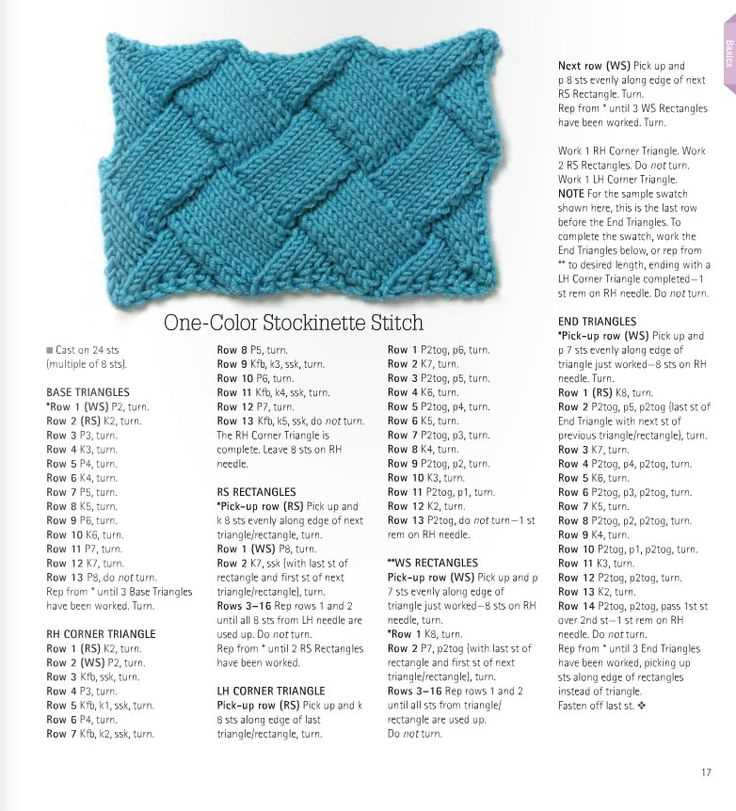
- Yarn: Choose a yarn of your preference in the desired weight and color.
- Knitting needles: Use the appropriate size needles for your chosen yarn.
- Tapestry needle: For weaving in ends.
- Scissors: To cut yarn.
Instructions:
- Cast on the desired number of stitches for your sweater. Make sure to choose a multiple of 2, as the stockinette stitch requires an even number of stitches.
- Begin knitting in stockinette stitch by working one row of knit stitches, followed by one row of purl stitches. Repeat this pattern until your piece reaches the desired length for the body of the sweater.
- For the sleeves, continue knitting in stockinette stitch until they reach the desired length.
- Once the body and sleeves are complete, it’s time to shape the neckline. You can do this by binding off a certain number of stitches in the center of the row and then decreasing on each side of the bind off stitches.
- Finish off your sweater by sewing the seams together using the tapestry needle. Make sure to weave in any loose ends.
This simple stockinette stitch sweater pattern allows you to create a classic and versatile garment. You can customize it with different yarns, colors, and even add embellishments or stitch patterns if desired. This is a great project for knitters of all skill levels and is perfect for cozy and stylish winter wear. Happy knitting!
Finishing Techniques for Stockinette Stitch Projects
Once you have completed your stockinette stitch project, it’s time to finish it off and make it look polished. Here are some finishing techniques that you can use to achieve a professional and tidy look:
Blocking
Blocking is the process of gently shaping your knitted piece to the desired measurements and allowing it to dry in that shape. This helps to even out the stitches and smooth out any uneven tension. To block your stockinette stitch project, you can use either wet blocking or steam blocking, depending on the fiber content of your yarn.
Weaving in Ends
Before you can fully consider your stockinette stitch project complete, you’ll need to weave in any loose ends. This involves using a yarn needle to thread the ends of your yarn through the stitches on the back of your project in a way that they are secure and not visible from the front. This helps to give your project a clean and professional finish.
Seaming
If you have knitted separate pieces for your project, such as a sweater or a hat, you’ll need to seam them together. The most common seaming technique for stockinette stitch projects is the mattress stitch, which creates an almost invisible seam. This technique involves using a yarn needle to sew the pieces together by picking up one loop from each side of the seam and weaving the needle back and forth between them.
Adding a Border
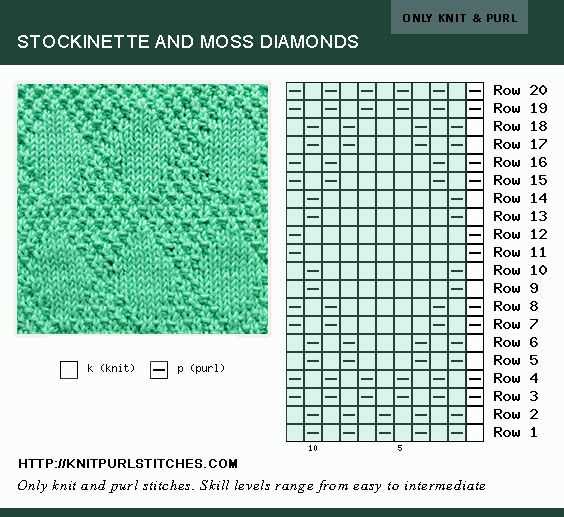
If you want to give your stockinette stitch project a finished look, you can consider adding a border. This can be done by picking up stitches along the edge of your project and knitting a few rows in a different stitch pattern or color. Adding a border can help to prevent curling edges and add a decorative touch to your project.
By using these finishing techniques, you can take your stockinette stitch project from handmade to professional-looking. Whether you’re knitting a sweater, a scarf, or any other item, taking the time to finish your project properly will result in a beautiful and long-lasting piece.
Q&A:
What is a stockinette stitch knitting pattern?
A stockinette stitch knitting pattern is a basic knitting pattern that creates a smooth and even fabric with a “v” shape on one side and a flat surface on the other side.
How do you knit a stockinette stitch?
To knit a stockinette stitch, you alternate between knitting a row and purling a row. On the right side (knit side), you knit all stitches, and on the wrong side (purl side), you purl all stitches. Repeat this pattern until you achieve the desired length.
What is the difference between stockinette stitch and garter stitch?
The main difference between stockinette stitch and garter stitch is the texture of the fabric. Stockinette stitch has a smooth, flat side and a “v” shape side, while garter stitch has ridges on both sides. In stockinette stitch, you alternate between knitting and purling rows, while in garter stitch, you knit every row.
What are the common uses of stockinette stitch?
The stockinette stitch is commonly used in a variety of knitting projects, such as sweaters, scarves, hats, and blankets. It creates a smooth and professional-looking fabric that is versatile and suitable for many different styles and designs.